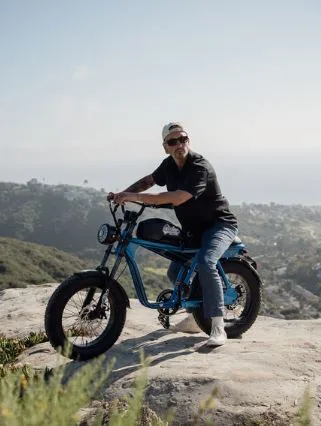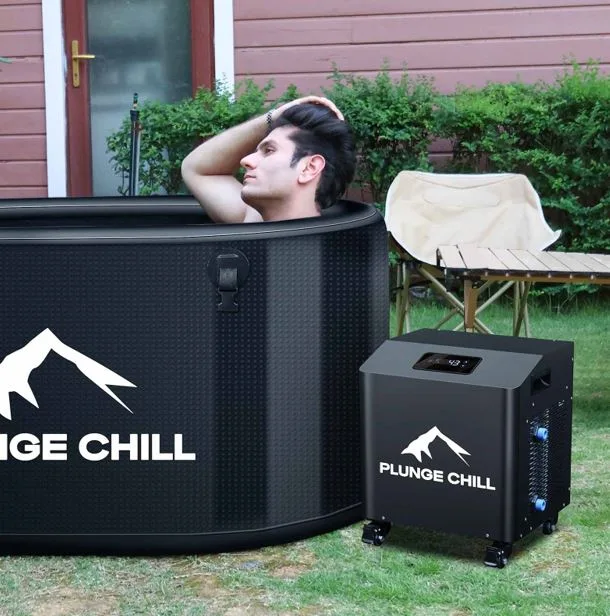The Rise of Retro-Style E-Bikes: A Blend of Vintage and Modern Tech
Shoppers love the look of a classic moped but want the ease, range, and safety of today’s best e-bikes. This guide explains what defines a retro electric bike, which modern features actually matter, and how to choose a vintage looking ebike without sacrificing performance. We’ll also spotlight Qiolor’s TIGER JR as a concrete example and share a quick buyer checklist.
What makes a retro e-bike look “right”?
A vintage looking ebike borrows the silhouettes and details of classic mopeds and café racers: a long cushioned bench, upright bars, metal or metal-look fenders, and a round (often extra-bright) headlight. Colorways trend toward deep blacks, creams, British-racing greens, and warm metallics. Frames favor clean lines and integrated wiring to keep the aesthetic uncluttered. Fat 20″–26″ tires add visual heft and soak up road chatter, reinforcing that nostalgic stance.
But styling alone isn’t enough. The best retro builds integrate the tech invisibly—battery packs that tuck into the “tank” area or seat tube, sealed wiring looms, and discreet displays that don’t ruin the analog vibe.
The modern tech that actually matters
- Motor & controller. Look at torque and controller current (amps), not just headline watts. Higher torque = quicker launches, stronger hill starts, and confidence when carrying cargo or a passenger.
- Battery & range. Battery capacity (in watt-hours, Wh) drives real-world range. For commuters, ~480–700 Wh is a sweet spot; bigger packs help if you often ride throttle-only or climb hills.
- Sensing & assist feel. Torque sensors feel natural and sporty; cadence sensors feel relaxed and are often cheaper. Either can be excellent when tuned well.
- Brakes & tires. Mechanical discs are fine for flat cities; hydraulic discs shine for heavier riders, hills, or frequent stops. Wide tires (e.g., 20×4.0) give comfort and stability on mixed surfaces.
- Lighting & visibility. Retro bikes usually run a prominent headlamp—make sure it’s not just pretty but bright, with a steady beam pattern and a wired brake-activated taillight for safety.
Who should buy a retro-style e-bike?
- Urban riders who want car-like presence in traffic without the bulk of a motorcycle.
- Style-forward commuters who value aesthetics as much as utility.
- Weekend cruisers who prioritize comfort, upright posture, and fun over extreme off-road chops.
- Beginner riders who appreciate the stability of wide tires and the confidence of bright, integrated lighting.
Qiolor TIGER JR (retro looks, everyday practicality)
Qiolor’s TIGER JR is a compact, café-inspired commuter that blends approachable geometry with capable electronics. It uses a 48V, 500W (750W peak) rear hub motor rated to deliver up to 63 N·m of torque, paired with a removable 48V 10Ah (≈480 Wh) battery. On paper, that translates to up to ~55 miles with pedal assist and ~32 miles on throttle-only—plenty for daily errands and cross-town commutes.
The TIGER JR’s fat 20×4.0 tires add comfort and grip on rough pavement, while the moped-style bench seat and upright cockpit keep the ride relaxed. A high-output, integrated LED headlight with horn and wired rear lighting supports visibility and brake signaling—useful in stop-and-go traffic and dusk riding.
For riders who like a brisk cruise, the JR is listed with up to 24 mph top speed (local e-bike laws vary—always follow your area’s regulations). The package rounds out with a clear G51 LCD display, single-speed drivetrain for low maintenance, and stout 400-lb max load rating that underscores its everyday utility.
Why it stands out for retro fans: the proportions, bench, and lamp deliver the classic moped vibe, but the electronics and lighting suite are thoroughly modern—so you get style and substance.
How to choose the right retro e-bike (step-by-step)
- Step 1 — Define your use case. Daily 10–20 mile commutes? Occasional weekend coffee runs? Passenger or cargo hauling? Your mileage and payload determine the battery size and brake spec.
- Step 2 — Match motor to terrain. Flat city: a smooth 500W hub motor with decent controller amperage feels lively. Hilly routes or heavier loads: seek higher torque or a motor/controller combo with stronger peak output.
- Step 3 — Battery realism. Compare rated ranges for both pedal-assist and throttle-only, then subtract ~20% to account for wind, hills, and rider weight. On the JR, the 480 Wh pack and published ranges provide a practical benchmark for urban use.
- Step 4 — Braking & tires. If your city is stop-heavy or hilly, hydraulic discs are worth it; otherwise well-tuned mechanical discs can suffice. Wide 20×4.0 tires bring plush comfort—just check that the tread matches your surfaces (slicks for city, semi-knobs for mixed paths).
- Step 5 — Fit & ergonomics. Retro benches look great, but ensure reach to bars and pedal stance feel natural. If you’re on the shorter end, compact frames like the TIGER JR can be ideal; taller riders might prefer larger retro platforms.
- Step 6 — Lighting & wiring. Look for integrated, bright front lighting with a clean beam and a brake-activated rear light; tidy cable routing keeps the vintage illusion intact while protecting connectors.
- Step 7 — Service & support. Retro or not, you’ll eventually need brake pads, tires, and firmware help. Favor brands with clear documentation and responsive support.
Retro vs. modern commuter: which should you pick?
Choose a retro electric bike if style is part of the experience you want every day—if the shape, seat, and lights make you want to ride more. Choose a contemporary commuter if you prioritize ultimate lightness, rack systems, and maximum pedaling efficiency. Many riders happily land in the middle: retro silhouette, modern drivetrain, practical lighting, and tires that tackle real streets—exactly the balance bikes like the TIGER JR aim for.
Buyer checklist
- Looks you love (frame, bench, paint)
- Motor torque and controller amps meet your hills
- Battery Wh aligns with your weekly mileage
- Disc brakes sized for your weight/speed
- 20×4.0 or similar tires for comfort and control
- Bright, integrated headlight + brake-activated taillight
- Clear display and simple controls
- Warranty and parts availability
Conclusion
A vintage looking ebike doesn’t have to be a compromise. The best examples pair nostalgic lines with the engineering that makes modern e-bikes so compelling: efficient motors, smart controllers, safe braking, and dependable lighting. If your heart wants a café-inspired silhouette but your head demands daily reliability, options like Qiolor’s TIGER JR show that you can have both—authentic retro charm backed by real-world performance.





